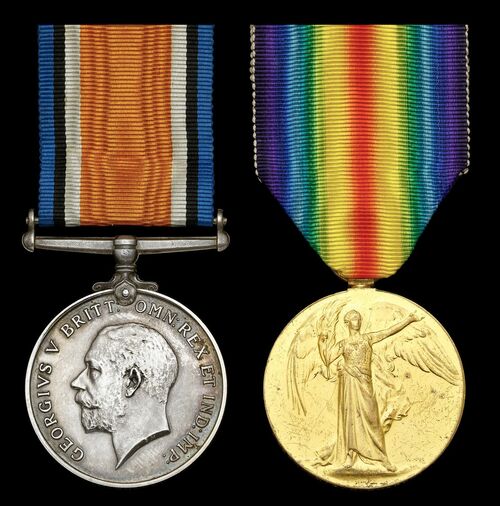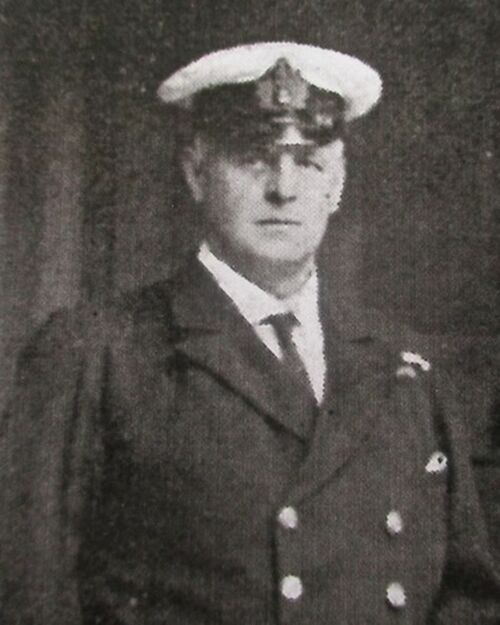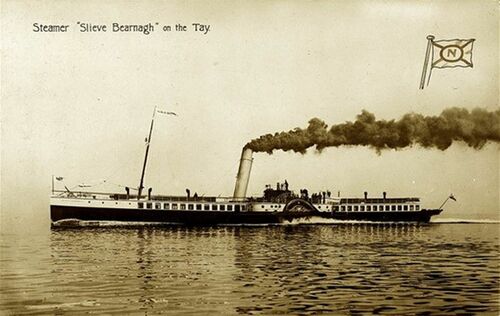Auction: 23113 - Orders, Decorations and Medals - e-Auction
Lot: 441
The Great War pair awarded to Lieutenant-Commander A. J. H. Chafer, D.S.C., Royal Naval Reserve, who was awarded his decoration for sweeping six German mines and clearing an important channel; by the time he finally retired he had spent almost half a century at sea and was thrice rewarded for acts of bravery
British War and Victory Medals (Lt. Commr. A. H. Chafer), good very fine (2)
[D.S.C.] London Gazette 29 June 1917:
'For services in Mine-sweeping operations between 1st July 1916 and 31 March 1917.'
The Recommendation states:
'On the 22nd January 1917, he discovered and rapidly cleared seven enemy mines from a dangerous position. On 4th March 1917, he rendered valuable assistance under difficult conditions, in exceptionally heavy weather in sweeping up six enemy mines, thus successfully clearing an important channel.'
Alfred John Havercroft Chafer was born in 1867 at Grimsby. He joined the Great Central Railway Company Steamer Service as 2nd Officer on the Ashton. In November 1891 as second officer Chafer was awarded the Board of Trade bronze Medal for Gallantry in Saving Life at Sea when the Enterkin sank at the Galloper Sands. The Enterkin was a total wreck. The Ashton launched a boat in a heavy sea, but her sides were stove in. Another boat was launched, and two young men spreadeagled on a boat that had turned turtle were picked up in difficult and dangerous circumstances. One of the rescued men was George Clunis Ross who eventually became King of the Keeling Cocos Islands.
Chafer was promoted to Chief Officer in January 1894 and his first command was the Lutterworth in March 1896. In February 1901 he was given permanent command of the Sheffield and in 1910 he was appointed to the Accrington.
He received a commission as a Lieutenant in the Royal Naval Reserve in 1914 and throughout the whole of the war he served in paddle minesweepers and had the distinction of being the oldest mine sweeping officer afloat. Promoted to Lieutenant-Commander in 1918, he was in command of the paddle mine sweeper Slieve Bearnagh at the time of winning the D.S.C.
Discharged in May 1919, he returned to the Railway Company and commanded the Bury where he was Commodore Captain for the next five years. In September 1924 he was commended by the Directors of the Railway Company for the rescue of the crew of an Estonian ship Sakala. A heavy gale was blowing, and the Sakala had taken a heavy list. The lifeboat hung on its davits in the water and eventually unhooked itself. Eight men jumped into her. They found that they could not get back to the ship and were picked up by the Bury in very difficult and dangerous circumstances.
Chafer retired in June 1931 after 49 eventful years at sea and died on 21 April 1935 at his home, 5 Earl Street, Grimsby.
Tragically, his son, Arthur Havercroft Chafer, who was the Chief Officer on the Empire was killed on 11 August 1941 when she was bombed and sunk by German aircraft off Lisbon.
Subject to 20% VAT on Buyer’s Premium. For more information please view Terms and Conditions for Buyers.
Sold for
£520
Starting price
£70









